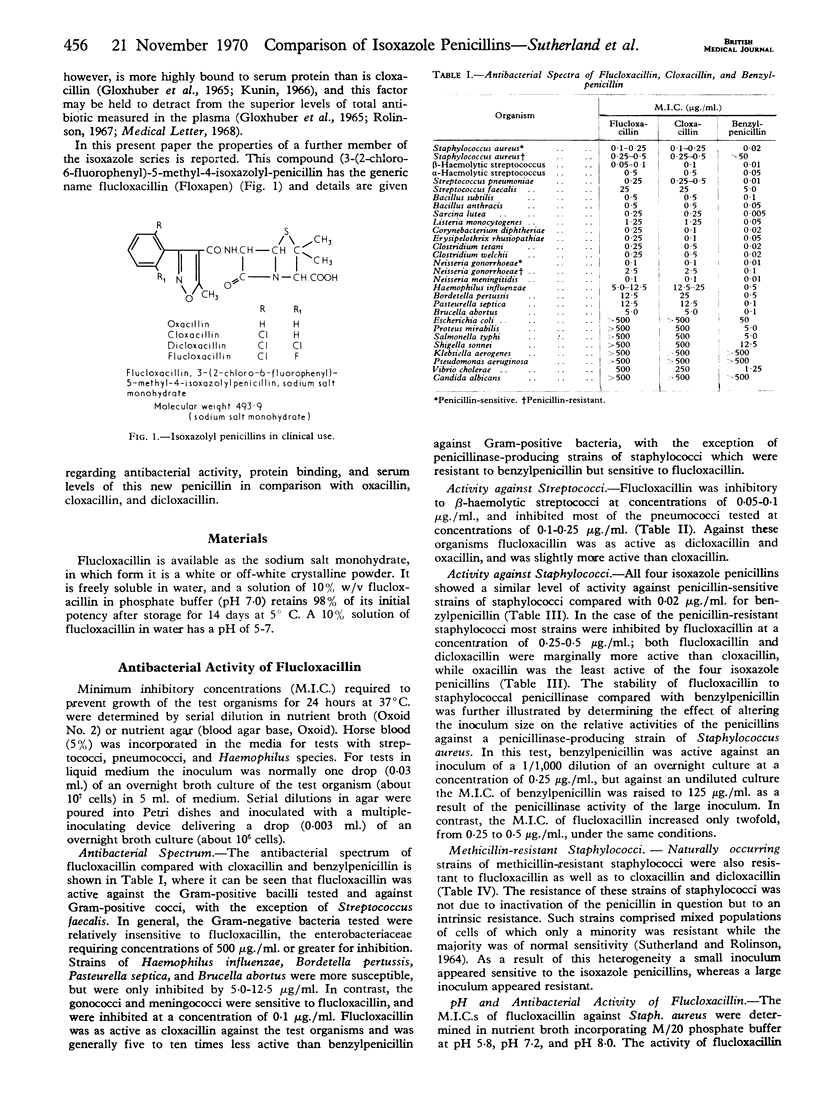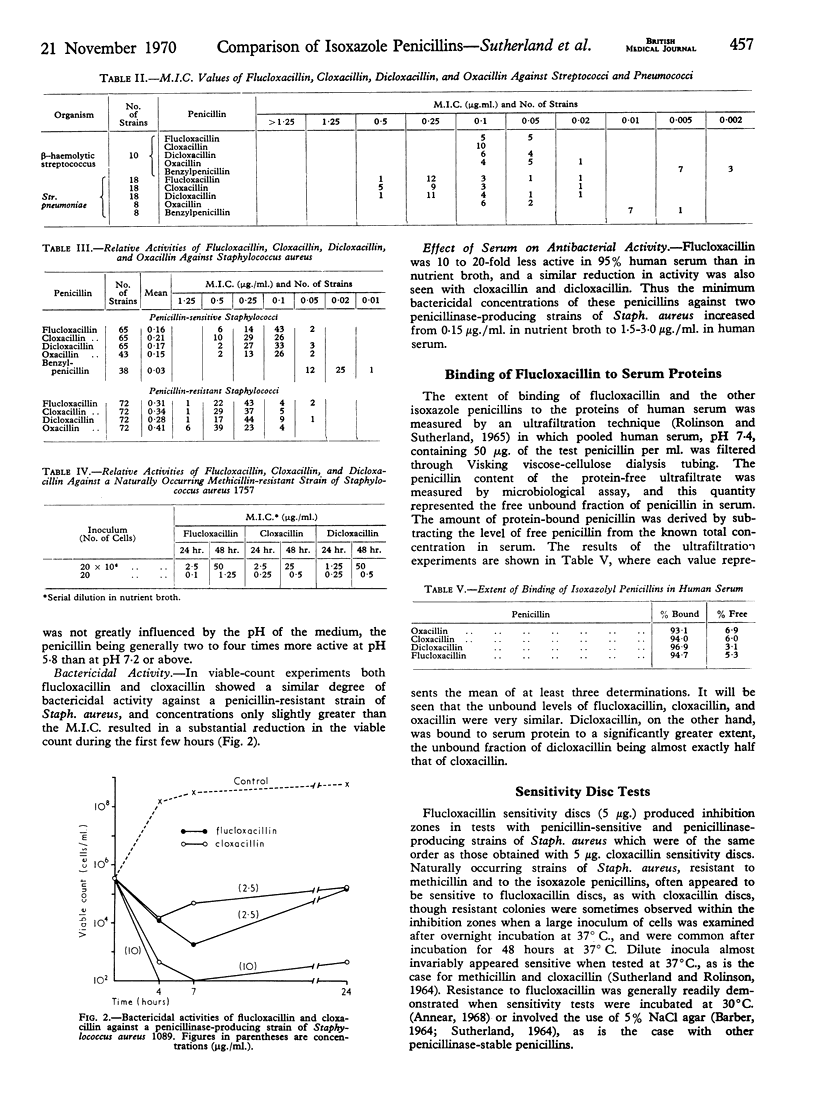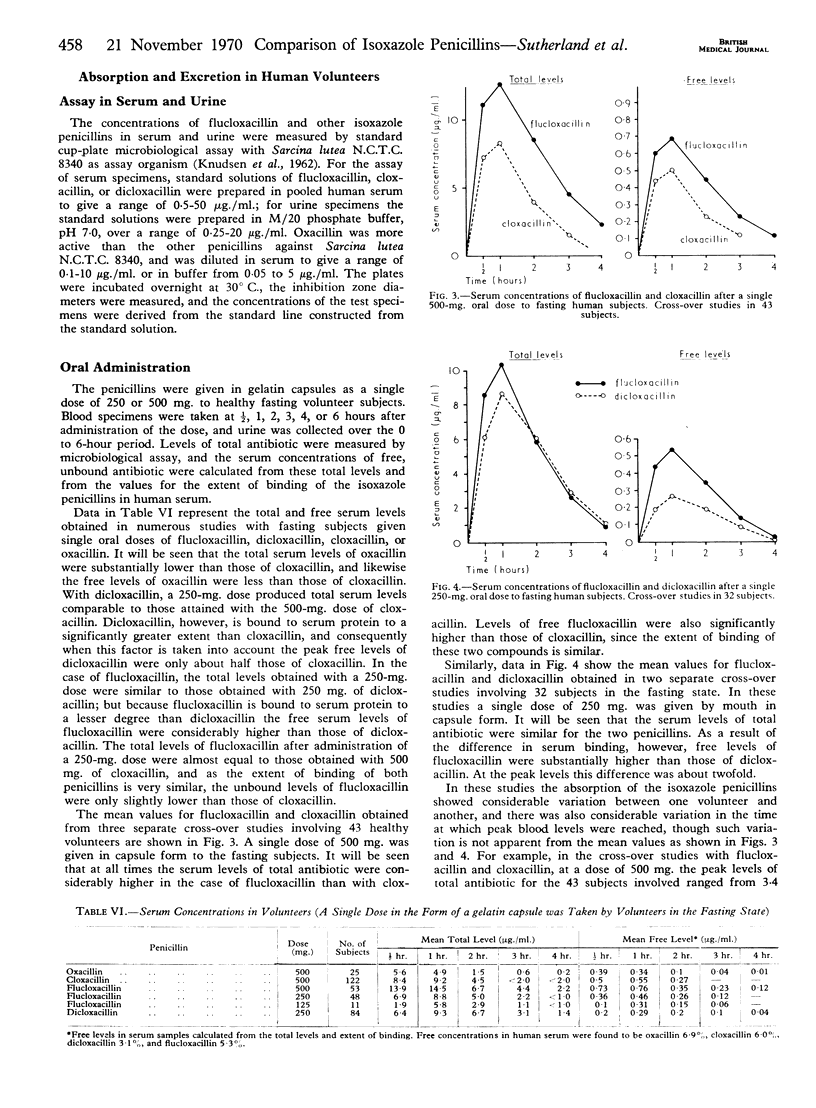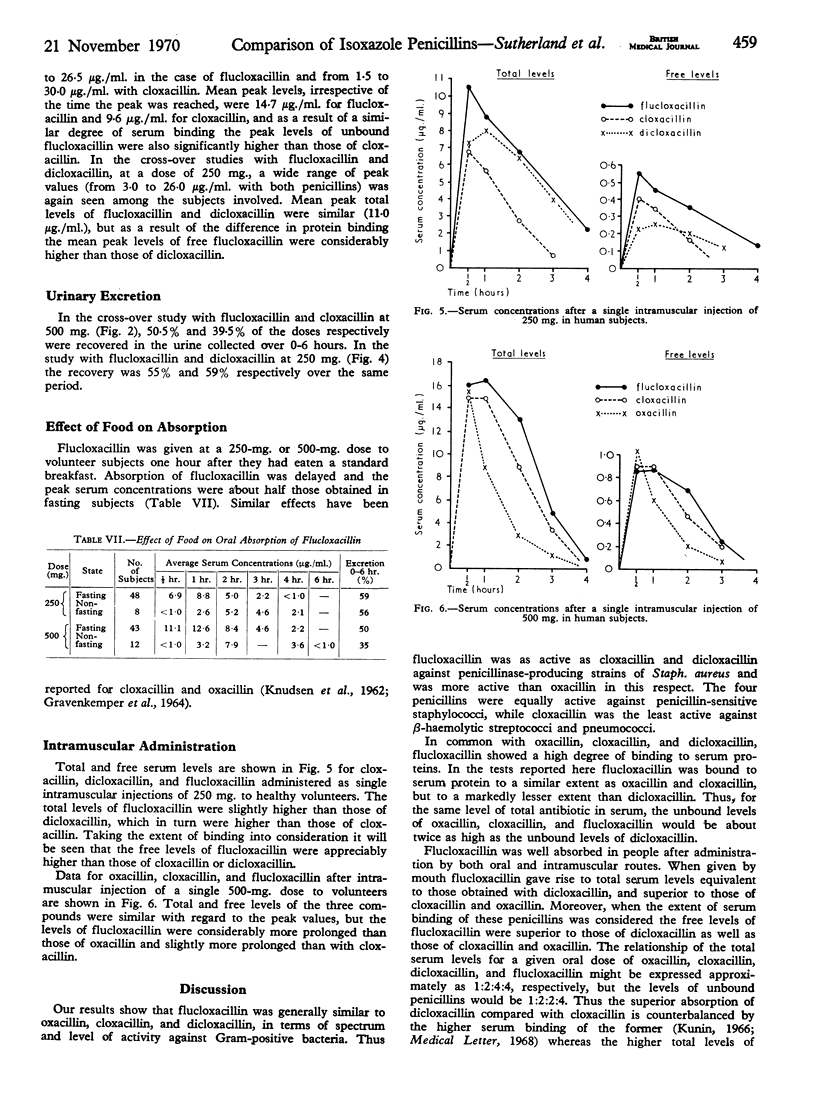Abstract
Flucloxacillin, a new isoxazole penicillin, is active against penicillinase-producing strains of Staphylococcus aureus and is well absorbed in man after oral and intramuscular administration. Compared with isoxazole penicillins in current clinical use—namely, oxacillin, cloxacillin, and dicloxacillin—flucloxacillin has proved as active against Gram-positive cocci, including penicillin-resistant staphylococci. The extent of binding of flucloxacillin to the protein of human serum was similar to that of oxacillin and cloxacillin and less than that of dicloxacillin. In man flucloxacillin given orally produced total and free serum levels higher than those obtained with oxacillin and cloxacillin; total serum levels similar to those of dicloxacillin, and free levels greater than those of dicloxacillin. Similarly, after intramuscular injection the free serum levels of flucloxacillin were higher than those of oxacillin, cloxacillin, and dicloxacillin.
Full text
PDF





Selected References
These references are in PubMed. This may not be the complete list of references from this article.
- Annear D. I. The effect of temperature on resistance of Staphylococcus aureus to methicillin and some other antibioics. Med J Aust. 1968 Mar 16;1(11):444–446. [PubMed] [Google Scholar]
- BARBER M. NATURALLY OCCURING METHICILLIN-RESISTANT STAPHYLOCOCCI. J Gen Microbiol. 1964 May;35:183–190. doi: 10.1099/00221287-35-2-183. [DOI] [PubMed] [Google Scholar]
- DOYLE F. P., LONG A. A., NAYLER J. H., STOVE E. R. New penicillins stable towards both acid and penicillinase. Nature. 1961 Dec 23;192:1183–1184. doi: 10.1038/1921183a0. [DOI] [PubMed] [Google Scholar]
- GRAVENKEMPER C. F., SWEEDLER D. R., BRODIE J. L., SIDELL S., KIRBY W. M. CLOXACILLIN: COMPARISON OF ORAL AND PARENTERAL FORMS WITH OXACILLIN AND METHICILLIN. Antimicrob Agents Chemother (Bethesda) 1963;161:231–236. [PubMed] [Google Scholar]
- Gloxhuber C., Offe H. A., Rauenbusch E., Scholtan W., Schmid J. Dicloxacillin. Chemie, Biochemie und Toxikologie. Arzneimittelforschung. 1965 Apr;15(4):322–330. [PubMed] [Google Scholar]
- KNUDSEN E. T., BROWN D. M., ROLINSON G. N. A new orally effective penicllinase-stable penicillin--BRL. 1621. Lancet. 1962 Sep 29;2(7257):632–634. doi: 10.1016/s0140-6736(62)92542-4. [DOI] [PubMed] [Google Scholar]
- KUNIN C. M. EFFECT OF SERUM BINDING ON THE DISTRIBUTION OF PENICILLINS IN THE RABBIT. J Lab Clin Med. 1965 Mar;65:406–415. [PubMed] [Google Scholar]
- Knott T., Lange A., Volkening R. Dicloxacillin, ein Penicillinase-festes Oralpenicillin. Antibakterielle Wirksamkeit und Pharmakokinetik beim Menschen. Arzneimittelforschung. 1965 Apr;15(4):331–340. [PubMed] [Google Scholar]
- Kunin C. M. Clinical pharmacology of the new penicillins. 1. The importance of serum protein binding in determining antimicrobial activity and concentration in serum. Clin Pharmacol Ther. 1966 Mar-Apr;7(2):166–179. doi: 10.1002/cpt196672166. [DOI] [PubMed] [Google Scholar]
- Rolinson G. N., Sutherland R. The binding of antibiotics to serum proteins. Br J Pharmacol Chemother. 1965 Dec;25(3):638–650. doi: 10.1111/j.1476-5381.1965.tb01788.x. [DOI] [PMC free article] [PubMed] [Google Scholar]
- SCHOLTAN W., SCHMID J. [The binding of penicillins on the proteins of the blood and tissues]. Arzneimittelforschung. 1962 Aug;12:741–750. [PubMed] [Google Scholar]
- SUTHERLAND R., ROLINSON G. N. CHARACTERISTICS OF METHICILLIN-RESISTANT STAPHYLOCOCCI. J Bacteriol. 1964 Apr;87:887–899. doi: 10.1128/jb.87.4.887-899.1964. [DOI] [PMC free article] [PubMed] [Google Scholar]
- Verwey W. F., Williams H. R., Jr, Kalsow C. Penetration of chemotherapeutic agents into tissues. Antimicrob Agents Chemother (Bethesda) 1965;5:1016–1024. [PubMed] [Google Scholar]


